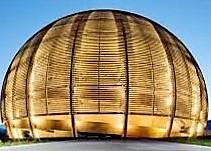Speaker
Description
In spite of decades of research, many observed nuclear abundances remain that can not be reproduced by p-process nucleosynthesis calculations [1].
This is mainly due to the lack of constraints for the involved nuclear physics models.
Previous studies have shown that key reactions affecting the abundance of the p-nucleus $^{168}$Yb are the $^{164,166}$Yb($\alpha, \gamma$) reactions and that these are mostly sensitive to the $\alpha$-optical-model-potential ($\alpha$-OMP) [2,3].
To study the $\alpha$-OMP in the Yb chain and its dependence on the proton-to-neutron ratio, a stacked target activation experiment was performed at the University of Cologne's Cologne Clover Counting setup investigating the $^{170,172}$Yb($\alpha,n$)$^{173,175}$Hf reaction cross sections.
The results were validated by simultaneous measurements of the well established $^{55}$Mn($\alpha,(2)n$)$^{57,58}$Co and $^{54}$Fe($\alpha, n$)$^{57}$Ni reaction cross sections.
All measurements were compared to Hauser-Feshbach statistical model calculations [4].
[1] M. Arnould and S. Goriely, Phys. Rep. 384, 1 (2003)
[2] T. Rauscher et al., Mon. Not. R. Astron. Soc. 463, 4153 (2016)
[3] T. Rauscher et al., Astrophys. J. Suppl. Ser. 201, 26 (2012)
[4] W. Hauser and H. Feshbach, Phys. Rev. 87, 366 (1952)
